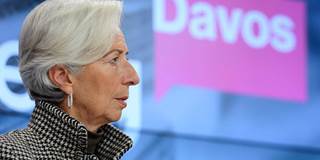Since the end of World War II, the hierarchy of economic priorities has been relatively clear: build a prosperous and open world order first, then try to generate inclusive and sustainable national growth patterns. Now, a reversal seems to be underway, with far-reaching consequences for the global economy.
HONG KONG – Since the end of World War II, the hierarchy of economic priorities has been relatively clear. At the top was creating an open, innovative, and dynamic market-driven global economy, in which all countries can (in principal) thrive and grow. Coming in second – one might even say a distant second – was generating vigorous, sustainable, and inclusive national growth patterns. No more.
In fact, a reversal seems to be underway. Achieving strong inclusive national-level growth to revive a declining middle class, kick-start stagnant incomes, and curtail high youth unemployment is now taking precedence. Mutually beneficial international arrangements governing flows of goods, capital, technology, and people (the four key flows in the global economy) are appropriate only when they reinforce – or, at least, don’t undermine – progress on meeting the highest priority.
This reversal became apparent in June, when Britons – including those who benefit significantly from the existing open economic and financial system – voted to leave the European Union, based on what might be called the sovereignty principle. EU institutions were perceived to be undermining Britain’s capacity to boost its own economy, regulate immigration, and control its destiny.

HONG KONG – Since the end of World War II, the hierarchy of economic priorities has been relatively clear. At the top was creating an open, innovative, and dynamic market-driven global economy, in which all countries can (in principal) thrive and grow. Coming in second – one might even say a distant second – was generating vigorous, sustainable, and inclusive national growth patterns. No more.
In fact, a reversal seems to be underway. Achieving strong inclusive national-level growth to revive a declining middle class, kick-start stagnant incomes, and curtail high youth unemployment is now taking precedence. Mutually beneficial international arrangements governing flows of goods, capital, technology, and people (the four key flows in the global economy) are appropriate only when they reinforce – or, at least, don’t undermine – progress on meeting the highest priority.
This reversal became apparent in June, when Britons – including those who benefit significantly from the existing open economic and financial system – voted to leave the European Union, based on what might be called the sovereignty principle. EU institutions were perceived to be undermining Britain’s capacity to boost its own economy, regulate immigration, and control its destiny.